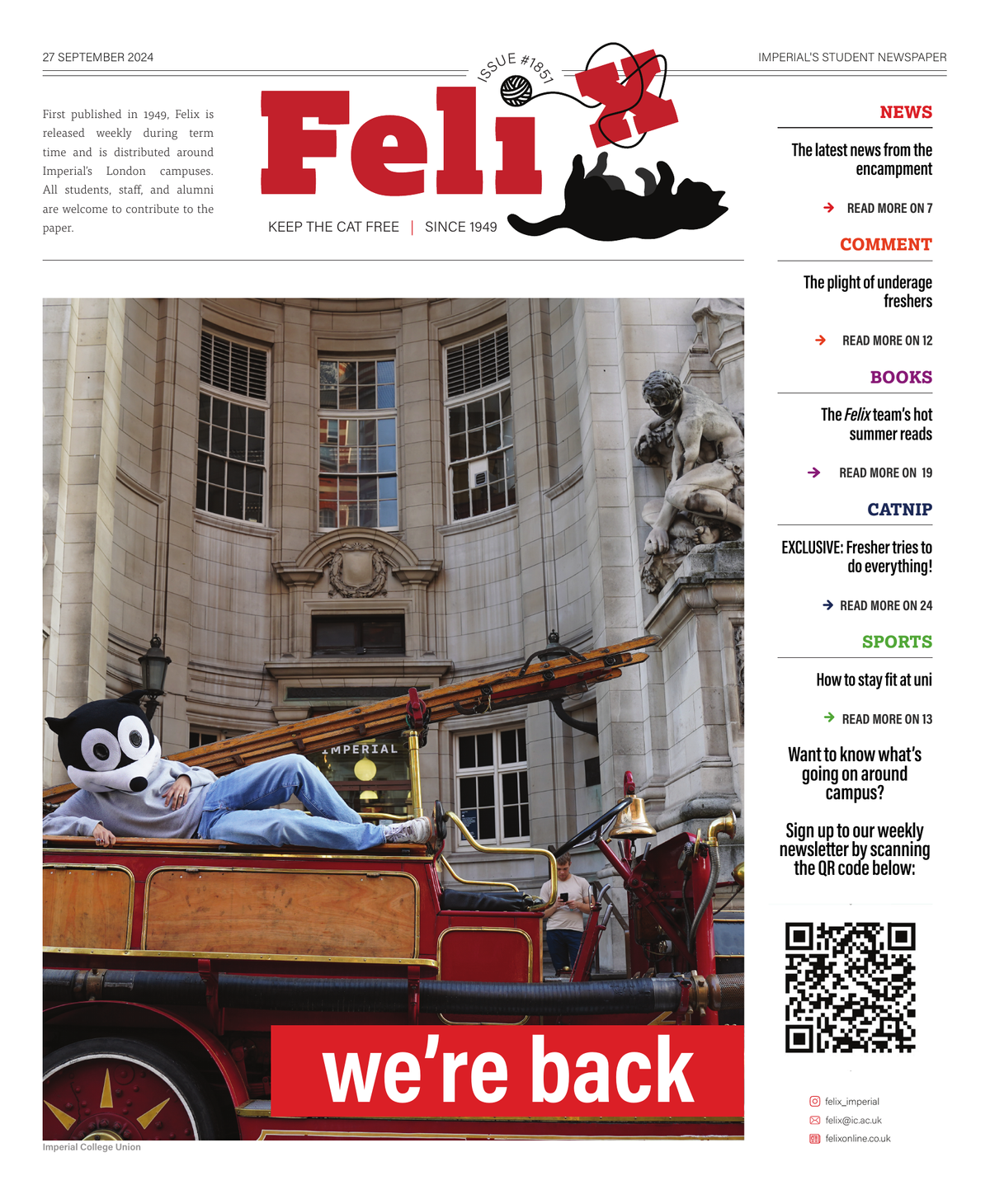Felix's guide to societies
Freshers, mark your calendar for Tuesday 1st October, to be welcomed by an army of eager societies at the annual Fresher’s Fair.

Societies at UK universities, unlike the party throwing, car-wash fundraising, Kappa-Omega societies portrayed by Hollywood movies, consist of hobby-associated student groups, managed and financed partly by students and the Union. This year, Imperial College Union added 12 new societies to the never-ending list of Clubs, Societies, and Projects (CSPs), reaching a count of 365 societies, each falling into one of nine categories.
The Nine Categories
The Sports category hosts 93 different clubs, from the most common sports such as football and tennis, to less known ones such as pole and aerial, and synchronised swimming. Some sports have men and womens teams, and some are ICSM or “Medics” teams, meaning all members come from Imperial’s medical school. These clubs will generally request a Imperial Athletic Membership as a base requirement to fund an additional membership to the team. With an average fee of £35, and a maximum of £90 to cover equipment costs and coaches’ fees, they are the most expensive memberships to join; however, they include a year of sports, training, social nights, and games – including the chance to play against other universities. As a fair warning, these can become very competitive, with members split into teams based on abilities. Last year’s martial arts societies joined this year’s Sports category.
The Medical School was granted its own category this year, named ICSM. It consists of 46 CSPs focused on medical specialities or artistic groups.
For thrill-seekers who enjoy athletic outdoor activities, the Outdoor category offers 17 clubs such as mountaineering, motorsports, gliding, surfing, skydiving, and racing.
The 42 academic-related clubs commonly supplement what members learn academically with speaker events and external challenges to attend. For example, the Developer Student Club aims to teach its members tech-industry-related skills and provide career guidance.
Of the cultural societies, there are 57, providing a home for all international students. These are often organised either by region or by language, such as the Benelux (Belgium, Netherlands, and Luxembourg) society and the Russian Speaking society respectively.
The 31 Arts & Entertainment societies include theatrical, musical, and written entertainment. These often offer spectacular Friday night performances for prices far cheaper than that of West End. It also includes Imperial’s radio and newspaper.
Hobby clubs, which used to be under the Social and Indoor categories, are the most diverse societies, ranging from Harry Potter society, to DogSoc, to AnimeSoc. They are incredibly fun to attend, and offer a relief from stressful academics.
Last years charitable and faith societies are now combined into the Community category, the former dedicated to good causes, fundraising and raising awareness, the latter to religious groups.
Departmental societies are great opportunities to become acquainted with staff and students from different courses of years in the same department. Students can forge useful connections to build a network – useful for summer research internships (UROPs) or lab positions.
Where to read more
Every CSP can be visited under the “A to Z” page on eActivities with details on their current committee, their membership prices, merchandise to buy from the Union store, and links to their email and social media. Around 61% of all societies list their Instagram and every one uses it to announce their events, present their members, and possible add a Linktree page for even more information.
Where to see more
The first Tuesday of the term will host the Fresher’s Fair from 11am to 5pm around South Kensingtom campus. It gets wild and crowded: hence it is best for students to browse the A-to-Z list in advance and mark which societies they wish to explore. QR codes are spread across tables linking to various mailing lists and memberships on eActivities.
The fair is an opportunity to learn more about the society, the people within, their schedule, and requirements. CSPs may offer taster sessions (“Give it a go”) that are a great way to determine if the CSP fits to the student. It is normal to sign up for ten and end the year with one or two.
Many CSPs allow people to join around the year, however sport and musical societies fix their rosters early on for large events. It is always best to reach out the CSP via their social media to ask questions.










